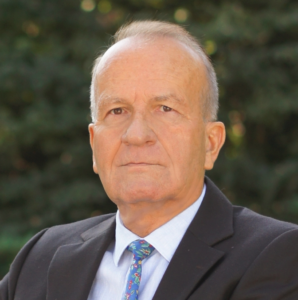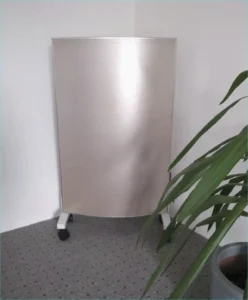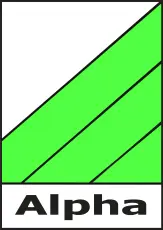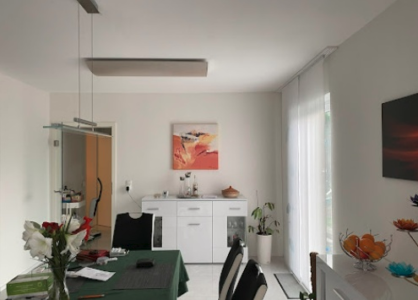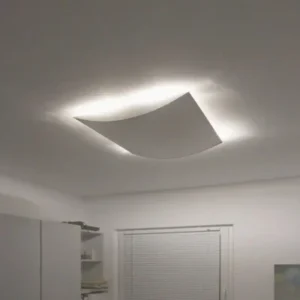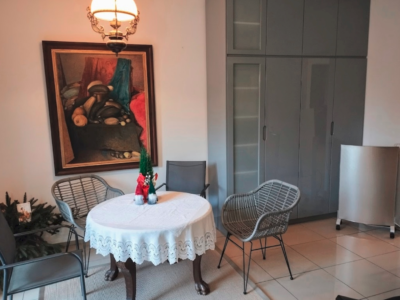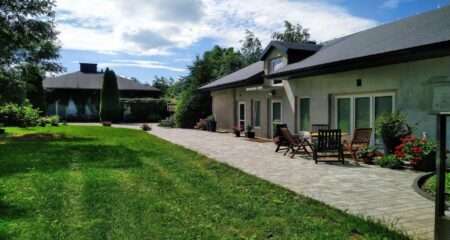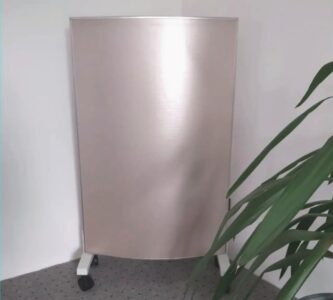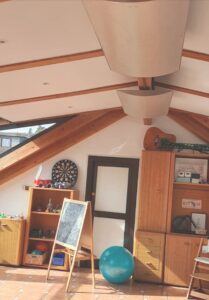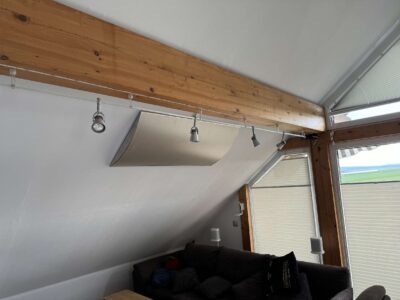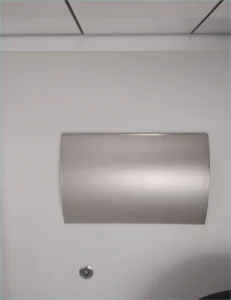 Infrared energy experts AbegSun
Infrared energy experts AbegSun
German product direct from the manufacturer
Manufacturer: ABEG Anlagen GmbH
Falkensteinstr. 13A • 34132 Kassel
Administration phone: +49 561 50811

AbegSun is a heating system of superlatives: low purchase costs, no maintenance, no boiler room, no tank farm, no chimney and high energy efficiency thanks to one of the highest heating efficiencies in the world - proven with the test certificate of the TU Dresden according to DIN EN IEC 60675-3.
Attention - there is no other heating system for which Attention - there is no efficiency test according to DIN for any other heating system. about the useful energy in the room! JAZ, COP and SCOP of a heat pump have nothing to do with efficiency! Don't go into completely senseless debt for the rest of your life with an expensive heat pump! No hot water heating system will ever pay for itself compared to the life cycle of an infrared heating system.
Find out about the technical data before buying a heater. For example, compared to a heater with a radiation temperature of 70°C (e.g. for picture heaters), AbegSun has a lower radiation temperature according to the Stefan-Boltzmann law 16 times the radiant power!
Meet with AbegSun the right option for one of the best heating systems in the world. - Your wallet will be delighted!
Bad news: Mannheim, Stuttgart and Augsburg are the first cities to shut down the gas network in 2035 as part of municipal heating planning.
Find out more for your own benefit at Comparison of heating technologies →
• High efficiency with AbegSun of 69.5% (± 2.8%) from a maximum of 70%
- High radiation temperature of over 145°C with large lateral dispersion
- Lowest possible heat loss from the rear thanks to up to 6 cm of mineral insulation
• extended beam angle of 147° for large-area heat distribution in the room
• Extremely short heat-up times of approx. 120 seconds to 100°C radiant temperature
• low weight of the elements, approx. 2-5 kg for easy installation and handling
- 1-click magnet mounting system for lightning-fast and cost-saving installation
• intelligent wireless thermostat controls for maximum energy savings
• Research and in-house production with modern laser manufacturing technology
• 10 years Garantie (AGB´s →) on heatings, 2 years on electronics
Information: - 1-click installation system for lightning-fast and cost-saving installationAccording to a study by the Fraunhofer Institute, infrared heating is 32% more efficient than gas condensing heating - and that with an efficiency of only approx. 50% for the infrared heaters used.
AbegSun has the highest possible efficiency of almost 70%. It is one of the most economical heating systems in the world - both in terms of purchase and consumption.
• Environmentally friendly, sustainable, resource-saving, recyclable, repairable
Infrared radiation is light radiation of a certain frequency, similar to solar radiation. It is emitted by an infrared heater as heat directly into the room without heating the air. It travels through the room at the speed of light and is partly absorbed and partly reflected by people, objects, walls and ceilings. This process continues until the energy is completely used up.
It often hits each area several times, so that the room warms up evenly. If a person is hit several times, they are warmed each time by the same, already paid-for energy - unique and only possible with radiant energy! unique and only possible with radiant energy!
Compared to convection heating, the room temperature of an infrared heater can be set 2° C lower than usual because convection heat has a cooling effect due to the movement. This also saves energy.
An infrared heater is a direct heating system that does not require a burner, compressor, pumps, valves or meters of hot water pipes. This means that infrared heating is durable, maintenance-free and cost-effective, and extremely easy to install. There is no need to transfer temperatures from the ground or air to another medium by heat exchange. The room temperature of the previous day is simply raised to the comfortable temperature. There is no need to extract heat (or cold) from the outside air or geothermal energy 60-120 meters deep from the earth in order to then transfer it to the heating water by heat exchange, which causes losses.
At night and also during the day, when no one is in the room, everything is off. - Consumption is ZERO.
The energy consumption of an infrared heating element depends on the wattage specified by the manufacturer. A radiator with 1000 watts of power consumes 1 kilowatt hour of electricity per hour. If you pay 32 cents for this, that is the cost of heating for one hour.
However, a thermostat-controlled infrared heater is only switched on for a fraction of an hour, as it switches off automatically once the set temperature desired by the occupant has been reached. It only switches on again after the temperature has dropped by the set delay time (hysteresis). The hysteresis is usually set to 0.5-1°C for infrared heaters. Due to the warming up of people, objects and walls in the room, the switch-off times become longer and longer.
If a radiator with a high output is used, it switches off sooner than a radiator with a lower output when the set temperature is reached, depending on its higher output. - The consumption is the same. The power in watts therefore does not provide any information about the consumption costs of an infrared heater. These are largely dependent on the efficiency and heating behavior of the occupants.
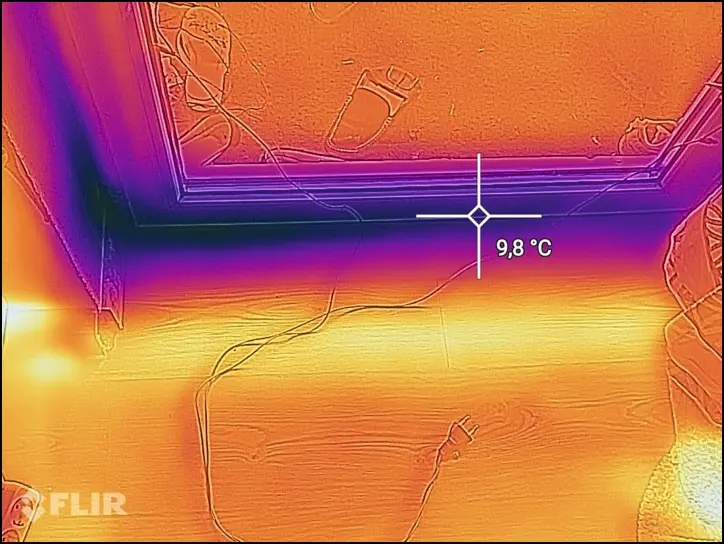 Allein ausschlaggebend für die Höhe der Heizkosten bei Infrarotheizungen sind:
Allein ausschlaggebend für die Höhe der Heizkosten bei Infrarotheizungen sind:
the energy quality of the building - thermal insulation and airtightnessIf the efficiency is poor, consumption is always higher than necessary! Poor is 40%, excellent is 70%. This is the highest percentage that is physically possible. AbegSun has achieved 69.5% according to the DIN test certificate.
If you are in the radiation angle of an AbegSun radiator, you will feel a heat of 100°C after just 120 seconds (TU Dresden test certificate). This is only impaired if the airtightness of the room is poor.
The light/heat particles (photons) travelling at the speed of light gradually heat the room evenly. The radiant heat is partly absorbed and partly reflected. All areas of the room, ceilings, walls and floors, including the corners of a room, are covered. This is in contrast to convection heating, where areas are not heated at all (the corners of a room) and some are heated excessively (the ceilings of the room).
In order not to lose the advantages of dust-free, healthy indoor air through the use of infrared radiant heating, one must do not follow the excessive legislation in the new Building Energy Act (GEG). After the building has been made airtight with great effort (Blower Door Test), a forced ventilation prescribed. This negates the benefits of radiant heat and impairs the high air quality achieved in the room. For people who suffer from dust allergies, forced ventilation is harmful to their health.
Forced ventilation causes unintentional convection in the room. This means heat losses, as moving air has a cooling effect of approx. 1.5 - 2°C. This must be compensated for by additional heat (turning up the thermostat) and is therefore negative in energy terms.
The basis for a statement about the consumption costs of infrared heating elements is always the efficiency tested in accordance with DIN. The scientific consensus is that only heating elements with an efficiency of at least 40% should be referred to as infrared heating elements. If it is below this, the radiant power is so low that mainly inefficient convection heat is generated.
However, the specified output in watts does not provide any information about the total consumption of an infrared heater, as the temperature is regulated by so-called intermittent operation, i.e. switching on and off. Whenever the set target temperature (also the user's comfort temperature) is reached, the heater switches off and then switches on again after the temperature has dropped by more than 0.5-1.0°C. If the electrical output of a heating element is high, this does not mean that more energy is consumed overall; because if the output is higher, it switches off earlier. The consumption costs remain the same.
A large radiator therefore does no harm. It just warms up the room more quickly and you are always on the safe side when outside temperatures are low and the building is poorly insulated.
The size of the heating elements can be determined by calculating the heat requirement or by measuring consumption before purchasing the heating system. The Service of ABEG can be used. If consumption is known from electricity bills, it is possible to determine how high the consumption costs will be. Then the Additional costs with poor efficiency can be calculated.
Smart meters can be ordered from many electricity providers from mid-2025. These will measure electricity consumption on an hourly basis. This will make it possible to control the timing of electricity consumption, i.e. you can then charge the batteries used for heating or the electric car in front of the door with cheap direct electricity. This makes the price of electricity cheaper.
A research project with a comparison between a water-based heat pump underfloor heating system and an infrared heating system revealed:
"Laboratory room measurements with set intermittent operation showed an increase in consumption differences between underfloor heating and infrared heating rooms of 15 %.
The controller used here was an “intelligent” room control system that independently determined the heating time required to reach a set temperature at a specific time. This control system worked very well for the electric underfloor heating and the IR heating. As the heat pump did not deliver a constant output due to its modulating operation depending on the heating curve, the control system was also unable to determine an exact heating-up time. As a result, heat was also supplied to the underfloor heating outside the scheduled heating times.
A simulation of intermittent operation for both heating systems with a heat pump without modulating operation and in well-insulated south and north-facing rooms resulted in a ca. 2% geringeren Energieverbrauch für die Infrarotheizung.
Source: “IR-Bau” research project; final project report: status: 02/2020;
Aktenzeichen: SWD-10.08.18.7-17.11
Clearly - the heating system with the highest efficiency. The differences between the products are immense and can generate several hundred euros in additional costs per year for a single-family home. Remarkable: - there are no efficiency measurements according to DIN for heat pump heating. The annual coefficient of performance JAZ says nothing about the efficiency of the entire heating system. For the efficiency, the useful heat in the room must be measured according to a regulated procedure, a DIN.
To the table of energy losses due to poor efficiency →
The consumption costs of infrared heating elements can only be calculated via their Efficiency must be assessed. The scientific consensus is that only heating elements with an efficiency of at least 40% can be described as infrared radiators. If it is lower, the radiant power is so low that mainly inefficient convection heat is generated. Due to the losses during the conversion of electrical energy into thermal energy, a maximum efficiency of 70% in accordance with DIN EN IEC 60675-3 can be achieved with so-called “gray radiators” for living spaces.
If the electrical output of a heating element is high, this does not mean that more energy is consumed overall; this is because a higher output switches off earlier. The consumption costs remain the same. A large radiator therefore does no harm, but it heats up more quickly. Another advantage is that you are more on the safe side when outside temperatures are low and the building is poorly insulated.
Comparisons of the consumption costs of infrared heaters are only possible by comparing the DIN-tested efficiency and the length of the heating time (dynamic factor). Both are shown in the Prüfzeugnis des Wirkungsgrades and must be available for inspection before a purchase decision is made. The number and size of infrared heaters can only be determined by the size of the room and the type of use of the room (e.g. living room, children's room, guest or bathroom). A heat load calculation according to DIN, as is valid for hot water heating systems, would lead to incorrect results. We are not dealing here with thermodynamics, but with quantum physics and the calculation according to the Stefan-Bolzmann formula.
The efficiency of infrared heating elements is scientifically proven (DIN EN IEC 60675-3) to be a maximum of 70% (± 2.8%) due to losses during the conversion of electrical energy into heat. AbegSun has 69.5% and is therefore one of the infrared heating elements with the lowest consumption costs.
We have Dr. Kosack and his work as a professor at the University of Kaiserslautern to thank for the existence of a DIN standard for measuring the efficiency of infrared heaters. In the DIN EN IEC 60675-3valid from January 1, 2023, specifies the criteria that must be applied when testing the efficiency of infrared heaters. The Technical University of Dresden has set up a measuring room in accordance with these criteria and carries out the DIN efficiency tests.
The criteria include:
Heat losses to the rear are not specifically measured in the DIN test, as they affect the front surface temperature at full height as a loss. This reduces the efficiency. As losses always occur physically when converting electrical energy into heat, the Claim of almost 100% efficiency of infrared heaters is incorrectif not a deliberate deception. It is thereby Primary energy with useful energy of the room. Look at the Additional costs with poor efficiency to.
In addition, according to Forschungsprojekt „IR-Bau“; Final project report: Status: 02/2020; File number: SWD-10.08.18.7-17.11:
"When designing infrared heaters, optimum insulation on the back is crucial for the radiation efficiency. Furthermore, the position in the room also has an influence on the radiation efficiency. Here it has been shown that a Ceiling suspension of the systems is advantageous on the radiation efficiency, as this reduces the heat dissipation via convection. However, it may also be possible to minimize the convection component of wall-mounted infrared heaters through design measures. However, there is still a need for further research here."
"The efficiency of an infrared heater determines what percentage of the electrical energy supplied is emitted into the room in the form of radiant heat. The remaining part is emitted in the form of convection or heat conduction and may not be used primarily to heat the room. The radiation efficiency is therefore a decisive factor for the efficiency of an infrared heating system."
Measurements of the radiation efficiency of various infrared heaters available on the market have revealed major differences. The radiation efficiency varies between 40 % and 70 % depending on the manufacturer. Until now, there has been no standardization that generally defines how the radiation efficiency and therefore the quality of an IR heater is determined."
Note AbegSun: the standardization has been in force since 1 January 2023 - AbegSun 69,5%
The scientific consensus is that from a radiation temperature of 60-70°C upwards and an efficiency of at least 40%, a heater can be described as an infrared heater. However, our experience, statements from customers and measurements with the infrared camera have shown that at these low temperatures, hardly any heat can be felt even at a short distance. This is also logical, as the radiation temperature decreases with the square of the distance and the heat is already lost upwards near the heating element as convection heat. With these heating elements, the proportion of convection heat is higher than the proportion of radiation heat. Consequently, infrared radiators should only be used at higher temperatures.
For a high degree of efficiency, the front surface temperature should be as high as possible, as the Radiant power increases by a factor of 16if the temperature is doubled (Stefan-Boltzmann law).
According to TU Dresden, AbegSun has an average radiation temperature of 145°C. This is a decisive factor for high efficiency with low consumption. Compared to a heater with a surface temperature of approx. 70°C, AbegSun has 16 times the radiant power!
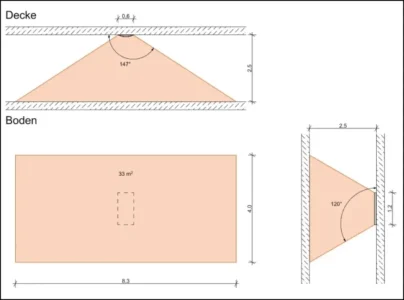 An infrared heater emits light radiation consisting of photons. Light has a radiation angle of 120° on a horizontal surface. If an infrared heater such as AbegSun has a larger radiation angle, e.g. 147° as with AbegSun, this results in a faster, large-area distribution of heat radiation in the room. In this case, a large radiant heat has a particularly positive effect. - The room warms up faster and more evenly due to the greater reflection and absorption.
An infrared heater emits light radiation consisting of photons. Light has a radiation angle of 120° on a horizontal surface. If an infrared heater such as AbegSun has a larger radiation angle, e.g. 147° as with AbegSun, this results in a faster, large-area distribution of heat radiation in the room. In this case, a large radiant heat has a particularly positive effect. - The room warms up faster and more evenly due to the greater reflection and absorption.
As the heat radiation decreases with the square of the distance, it is important for the efficiency of an infrared heating element that the front radiation temperature is high. It can then be noticeably distributed over the large area in the room. With AbegSun, the average temperature is 145°C. This has a particularly efficiency-enhancing effect. The efficiency increases.
The surface area heated by radiation at an angle of 147° is 33 m² when installed at a distance of 2.5 m.
When an infrared radiator is switched on, the maximum current corresponding to the output of the radiator is consumed immediately. The switching on and off controlled by the thermostat results in constant losses during this phase, as the heat only develops gradually. The longer this heating-up time is, the higher the energy loss during this time - the efficiency decreases. In the DIN test for infrared efficiency, this is measured using the so-called Dynamischen Faktor mapped. In addition, the convective part of the heat predominates during the heating-up time until approx. 70°C is reached, which has an additional negative effect. Moving air cools down by 1.5 to 2.0°C.
With AbegSun, we reach a radiation temperature of 100°C after just 120 seconds (according to the TU Dresden test certificate). This also has a positive impact on the efficiency calculations.
Energy-saving infrared heaters do not have a front cladding made of sheet metal, slate, marble, glass or similar, nor do they have a paint finish if maximum efficiency is to be achieved. Transferring heat from one material to another is a change of material that reduces energy efficiency and increases power consumption. The efficiency would deteriorate.
Even a change in the state of the aggregate, as happens several times in heat pump heating systems in the compressor, causes massive efficiency losses with every change. A high efficiency measured according to DIN and Certificate proven efficiency is the only guarantee for the lowest heating costs. By the way - there is no DIN efficiency test for heat pumps.
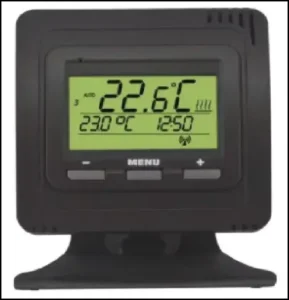 If you are only likely to be in the room for a short time, e.g. in the morning for breakfast, the direct and rapid heating within the radiation angle is switched on with the table thermostat. This results in a radiant temperature of 100° C after 120 seconds. The thermostat is positioned in the area of the radiation angle and regulates the temperature.
If you are only likely to be in the room for a short time, e.g. in the morning for breakfast, the direct and rapid heating within the radiation angle is switched on with the table thermostat. This results in a radiant temperature of 100° C after 120 seconds. The thermostat is positioned in the area of the radiation angle and regulates the temperature.
Danach wird wieder ausgeschaltet bis der Raum wieder betreten wird. Der höchste Energiespareffekt wird hierbei erreicht, da zu allen anderen Zeiten, auch nachts, alle Heizkörper ausgeschaltet sind und NULL Strom verbraucht wird.
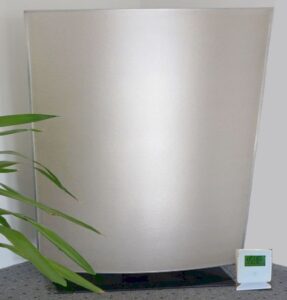 Bei diesem Heizkonzept wird eine Grundtemperatur von z.B. 16-18°C voreingestellt. Der Thermostat regelt sie morgens auf die gewünschte Wohlfühl-Temperatur hoch, z.B. auf 21,5°C. Das entspricht ca. 23°C gegenüber einer Konvektionsheizung, wie wir sie bisher in der Regel benutzt haben. Diese Grundtemperatur kann mit dem Wochenprogramm des mitgelieferten Thermostaten eingestellt werden oder von Hand, wenn man seine Wohlfühltemperatur haben will.
Bei diesem Heizkonzept wird eine Grundtemperatur von z.B. 16-18°C voreingestellt. Der Thermostat regelt sie morgens auf die gewünschte Wohlfühl-Temperatur hoch, z.B. auf 21,5°C. Das entspricht ca. 23°C gegenüber einer Konvektionsheizung, wie wir sie bisher in der Regel benutzt haben. Diese Grundtemperatur kann mit dem Wochenprogramm des mitgelieferten Thermostaten eingestellt werden oder von Hand, wenn man seine Wohlfühltemperatur haben will.
Ein Wochenprogramm ist dann sinnvoll, wenn die Bewohner einen relativ geregelten, gleichmäßig ablaufenden Tagesrythmus haben. Der Thermostat befindet sich bei diesem Heizkonzept außerhalb des Strahlungskegels und überwacht so den gesamten Raum.
With this concept, the radiator must be sufficiently large, as the entire room is to be heated. For larger rooms, several radiators must be distributed over the area. Consumption is not higher with several heating elements because they switch off earlier.
Infrarot-Heizelemente haben wegen des geringen Materialaufwands und der geringen Anzahl an mechanischen Komponenten bei der Herstellung einen geringen Co²-Abdruck. Es werden keine mechanischen Teile wie Pumpen, Regler, Ventile, Kompressoren oder endlos lange wasserführenden Leitungssysteme benötigt.
Infrarotheizungen lassen sich effektiv mit grünem Strom betreiben, sind leicht austausch- und receycelbar. Schon im ersten Quartal 2024 waren im deutschen Stromnetz 52% Anteile an regenerativem Strom enthalten. Das Ziel von 65% ab Mitte 2028 für Neubauten wird bei der Verwendung von Infrarot-Heizungen leicht zu erreichen sein. Dieses Ziel ist wegen des großen Einsatzes regenerativer Energieträger bereits Mitte 2025 erreicht worden.
Durch die jetzt geplante stetige Steigerung der CO² Bepreisung werden ÖL und Gas immer teuerer werden, sodass die Umstellung der Heizungen auf Strom immer sinnvoller und schneller von statten gehen wird. Diese Notwendigkeit bewirkt selbst auch noch ein schnellers Ansteigen der Brennstoffpreise, da diese immer weniger nachgefragt und verkauft werden.
Bei der TU Dresden wurde in einem standardisierten Muster-Wohngebäude untersucht, wie sich die Kombination einer Wärmepumpenheizung für die Grundlastversorgung mit einer Infrarotheizung zur Spitzenlastabdeckung auswirkt. Diese Untersuchungen gehen von dem Konzept einer sog. Hybridheizung aus, einer Kombination von Infrarotheizung und Wärmepumpe.
Die Ergebnisse zeigten, dass dieses durchaus ein Konzept für die Sanierung von Altbauten sein kann. Hier wurden allerdings Heizkörper mit 50% Wirkungsgrad eingesetzt, die heute nicht mehr den technischen Möglichkeiten entsprechen. Inzwischen gibt es Infrarotheizungen mit nahezu dem physikalisch maximal machbaren 70% Wirkungsgrad (AbegSun 69,5% +-2.8%). Diese hohe Effizienz macht den Einsatz eines weiteren Heizsystems, z. B. einer Wärmepumpe, überflüssig und unwirtschaftlich.
Dieses gilt auch für eine kleines Wärmepumpensystem für die alleinige Versorgung des Haushaltes mit Heißwasser. Es ist seit Jahrzehnten nach vielen diesbezüglichen Diskussionen Konsenz, dass die Warmwasserversorgung über elektronisch geregelt Durchlauferhitzer das weitaus effizientere System ist.
Die Untersuchungen des Hybridsystems wurden nicht mit den effizientesten Heizelementen gemacht. Es wurden Infrarotheizungen mit einem Wirkungsgrad von ca. 50% verwendet. Werden dagegen bei der Beheizung von Wohngebäuden Infrarotheizungen mit dem maximal möglichen Wirkungsgrad ca. 70% verwendet, macht eine Hybridlösung als Kombination von Infrarot und Wärmepumpe keinen Sinn mehr, da sich hierbei die Effizienz der Infrarotheizung um 28,57% erhöht gegenüber den bei der Untersuchung der TU Dresden verwendeten IR-Heizelementen.
Die Heizkosteneinsparung beträgt auf Grund der höheren Effizienz pro Jahr 548,54 € (32 ct/kWh – 6000 kWh Jahresverbrauch). Die Energieeinsparungen sind dabei konservativ linear zur Erhöhung des Wirkungsgrades gerechnet. Bei dem in der Studie angenommenen Lebenszyklus von 40 Jahren würde sich bei der Infrarotheizung eine zusätzliche Einsparung von 21.941,60 € ergeben. Dadurch wird eine Hybridlösung als Kombination mit einer Wärmepumpe wirtschaftlich unsinnig.
The TU Dresden study assumed a life cycle of 40 years for the two heating systems. As the heat pump has a maximum service life of 15-18 years, the investments were calculated twice.
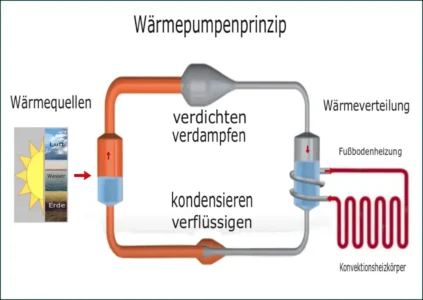 We are currently experiencing a hype regarding the use of Heat pump heaters. Da sie außergewöhnlich teuer sind, lohnt es sich, einen Blick auf diese Technik zu werfen. Physikalisch technisch handelt sich dabei um die seit jeher gebräuchliche Konvektionsheizung. Eine Konvektionsheizung benutzt physikalisch die Thermodynamik, um die erzeugte Wärme im Raum zu verteilen. Dieses grundlegende Prinzip ist bezogen auf die Effizienz mit erheblichen Mängeln behaftet. Die dabei auftretenden Energieverluste sind bei den heutigen Preisen für Brennstoffe eigentlich nicht mehr akzeptabel, dennoch wird die Wärmepumpenheizung mangels technischer Kenntnisse in der Öffentlichkeit empfohlen.
We are currently experiencing a hype regarding the use of Heat pump heaters. Da sie außergewöhnlich teuer sind, lohnt es sich, einen Blick auf diese Technik zu werfen. Physikalisch technisch handelt sich dabei um die seit jeher gebräuchliche Konvektionsheizung. Eine Konvektionsheizung benutzt physikalisch die Thermodynamik, um die erzeugte Wärme im Raum zu verteilen. Dieses grundlegende Prinzip ist bezogen auf die Effizienz mit erheblichen Mängeln behaftet. Die dabei auftretenden Energieverluste sind bei den heutigen Preisen für Brennstoffe eigentlich nicht mehr akzeptabel, dennoch wird die Wärmepumpenheizung mangels technischer Kenntnisse in der Öffentlichkeit empfohlen.
Jedoch kommt die modernere, auf quantenphysikalischen Grundlagen beruhende Heiztechnik der Infrarot-Strahlungsheizung auf Grund ihrer überlegenen Technik immer mehr in den Fokus bei Neubau und Sanierungen von Gebäuden. Dieses geschieht immer dann, wenn ein Bauherr oder Fachplaner das Märchen hinterfragt, dass man mit einer Wärmepumpenheizung das 3-5 fache der hineingesteckten Energie als Wärme hinten wieder herausholen könne. Wenn das so wäre, wären alle Energieprobleme der Welt mit einem Schlag gelöst. Diese Aussage verstößt jedoch gegen den ersten und zweiten Hauptsatz der Thermodynamik, ist also mit Sicherheit nicht möglich. Deswegen hat es auch seit vielen Jahrhunderten niemand geschafft, ein Perpetuum mobile zu bauen.
Also liebe Leser – keine Märchen von Politikern, Journalisten und (leider auch) Energieberatern glauben, sondern Informieren und Nachdenken!
Die niedrige Effizienz der Wärmepumpe liegt oft an einer falschen Einstellung der Anlage, oft aber auch an einem viel höheren Verbrauch an elektrischer Energie; denn eine Wärmepumpenheizung verwendet zum Erzeugen der Useful energy in space elektrischen Strom, der jedoch an kalten Tagen uneffizient nach dem alten Tauchsieder-Prinzip in einem Boiler erzeugt und gespeichert wird. Besonders wirkt sich dieses bei Luft-Wärmepumpen aus, wenn im Winter die Minusgrade der Luft genutzt werden müssen, um für eine Fußbodenheizung 28-30°C zu erzeugen oder für Konvektionsheizkörper sogar 65°C. – Da kann sich der Stromverbrauch schnell astronomisch vervielfachen. Die Vorlauftemperatur muss bei einer Wärmepumpenheizung sogar ca. 10°C höher eingestellt werden, um die Wärmeverluste im nachfolgendem Leitungssystem auszugleichen.
Die von der SHK-Branche kreirte Jahresarbeitszahl (JAZ) definiert lediglich den Temperaturgewinn des Volumenstroms am Ende der Kompressoreinheit. Sie berücksichtigt nicht die Verluste des gesamten Systems mit den folgenden endlosen Leitungen und Heizkörpern. Es werden also nicht alle den Verbrauch bestimmenden Werte eingerechnet. Dieses wird im Forschungsprojekt IR-Bau wie folgt festgestellt:
Wird ein Raum direkt elektrisch über z.B. eine IR-Heizung beheizt, entspricht der elektrische Verbrauch der Heizung dem Nutzwärmebedarf des Raumes. Entsprechend muss für einen energetischen Vergleich bei Wärmepumpen der gesamte notwendige Strom- und Wärmebedarf bilanziert werden, der zur Deckung des Nutzwärmebedarfs eines Raums notwendig ist. Für die Ermittlung einer Jahresarbeitszahl darf also nicht allein von dem Bilanzraum „WPA“ ausgegangen werden, den die VDI 4650 nutzt, sondern es muss der Bilanzraum „WPHA“ angesetzt werden.
Dieser Bilanzraum berücksichtigt alle Stromverbräuche und Wärmeverluste, die zur Versorgung eines Raumes mit der erforderlichen Nutzwärme notwendig sind, also die Leitungs- und Speicherverluste, die Übergabeverluste und die Energie für Pumpen, Stellventile, Wärmemengenzähler und eventuell zusätzlich notwendigen Raumtemperaturregelungen. Dies hat zur Folge, dass die Jahresarbeitszahl, bezogen auf den Bilanzraum WPHA, im Vergleich zur Jahresarbeitszahl nach VDI 4650, kleiner wird.
Somit ist die Differenz im Stromverbrauch von Wärmepumpe und IR-Heizung in Realität geringer, als die Werte nach VDI 4650 zunächst vermuten lassen.
Quelle: Forschungsprojekt „IR-Bau“; Projektabschlussbericht: Stand: 02/2020;
Aktenzeichen: SWD-10.08.18.7-17.11
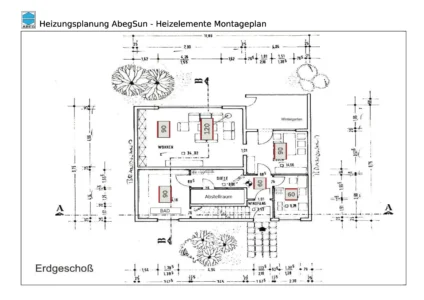
All prices stated on this website are (RRP) - non-binding sales prices including VAT. Please ask for a quote for final prices!
Our services include
Our AGB apply (General Terms and Conditions). About a request for quotation or by phone or e-mail to find out your current prices. If you wish, we can provide you with a price list when you place your order. free heating planning with installation plan, if you send us a floor plan (can be a mobile phone photo) by email - see Service →
Attention: with low consumption costs for years due to very high efficiency, acquisition costs are of secondary importance – see calculation table →
